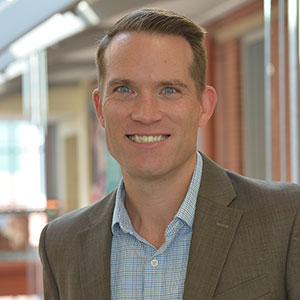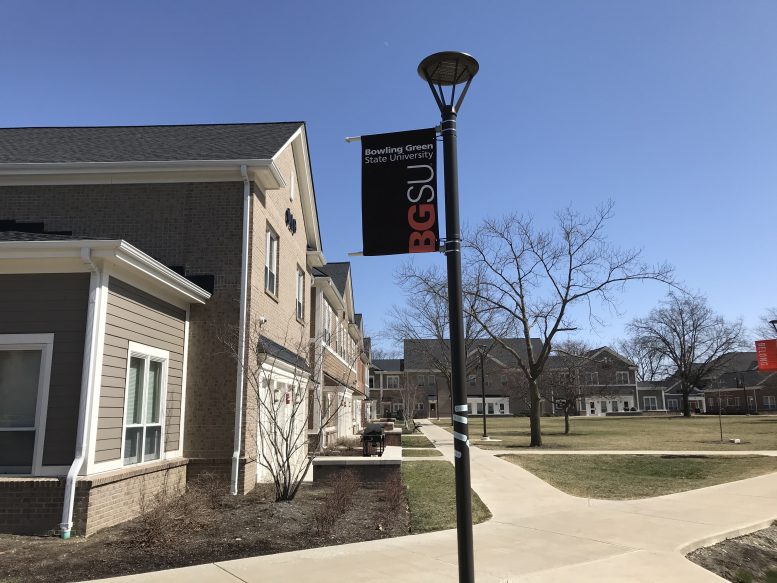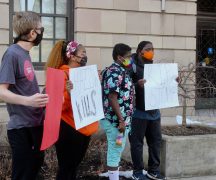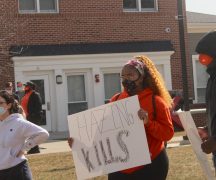By DAVID DUPONT
BG Independent News
Banning a fraternity, or banning all fraternities and sororities, would not solve the issues that have thrust themselves back in the headlines with the death of Stone Foltz.
The 20-year-old business major at Bowling Green State University died early this month as a result of an alleged hazing incident off-campus, and his death was not the only one this spring tied to a fraternity. The death of another student Adam Oakes, about a week before Foltz’s death, is being investigated at Virginia Commonwealth .

(University of Connecticut photo)
Adam McCready has been keeping tabs on these tragedies. An assistant professor-in-residence of higher education and student affairs at the University of Connecticut has studied fraternities, including during his time earning his master’s degree in college student personnel at BGSU from 2005.
The issues that plague fraternities are deeper than those institutions themselves. They go back to the way society views manhood, and masculinity.
McCready sees a tie between those fraternities that espouse a very traditional view of masculinity and those most likely to engage in hazing and alcohol abuse.
He looked at 75 chapters of a national fraternity. Their behaviors in this regard were not uniform among chapters. Nor are these behaviors uniform across national fraternities.
Those fraternities that most hue to traditional views of manhood, with members most intent on projecting that they are not gay, are the most likely to have strict hierarchies, and engage in hazing and heavy drinking, he said. Engaging in risky behavior is valued as a sign of manliness.
“Where there’s pressure to be perceived as heterosexual, where there’s a heightened concern to be perceived of as not being gay, there might be in greater pressure to drink or engage in hazing as a way to prove you’re a real man, you’re not feminine” McCready said.
One of the dangers comes with alcohol use is that the older students have tended to drink more, and their tolerance has built up over time.
“If new people join the organization and are trying to replicate those behaviors, it’s a really dangerous combination of factors,” he said.
Colleges need to watch out for those fraternities that exhibit these tendencies. He remembers from his time at BGSU, the bedsheets hanging from windows displaying sexist slogans. “Groups that engage in those stereotypical behaviors might be signals of groups that are involved in problematic behavior,” he said. “If you notice a chapter that is recruiting using very traditional tropes of masculinity, it might a reason for alarm.”
It’s not as simple, he said, as just banning those frats. If they’re gone, others fill the void. And if a campus gets rid of fraternities and sororities altogether, “these students are still going to congregate in other organizations,” McCready said.
“For men in particular there is some value to having a space that allows them to have close relationships with other men. In our society there are not often spaces for men to be close to other men that are socially acceptable.”
In sororities – McCready was a house director of a sorority in his second year at BGSU – hazing doesn’t revolve around risky behaviors, as much as around appearance, body image, and place within the pecking order.
McCready said he was a member of the chapter of Theta Delta Chi during his undergraduate days at George Washington University in Washington D.C.
It wasn’t perfect, he said, but it did not chase a masculine ideal in the way some fraternities do. The membership was small and made up of men involved in cross country or on the cheer squad or orientation leaders.
They didn’t have a house “so we didn’t have a space to throw parties,” he said.
Yet they did create a close-knit community.
Alumni and advisors can play a role in reforming fraternities, providing guidance and helping to make significant changes in how new members are orientated.
Addressing culture of gender roles and norms as campus as a whole is needed.
There’s variety of factors at play,” McCready said.
The key, his research has shown, is finding ways to help “men be more vulnerable to one another, to form genuine relationships – what fraternities do,” he said. “But the more we can do that across campus, the better off we’ll all be within higher education and, really, within our society.”





